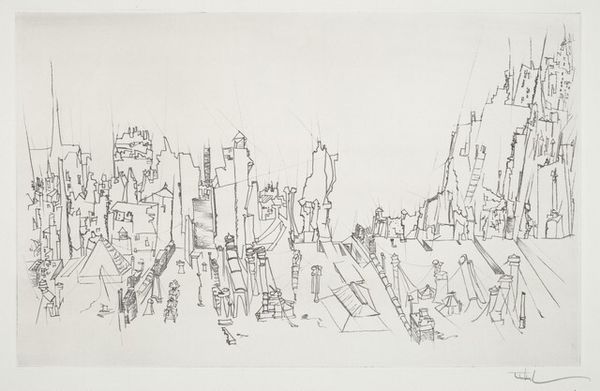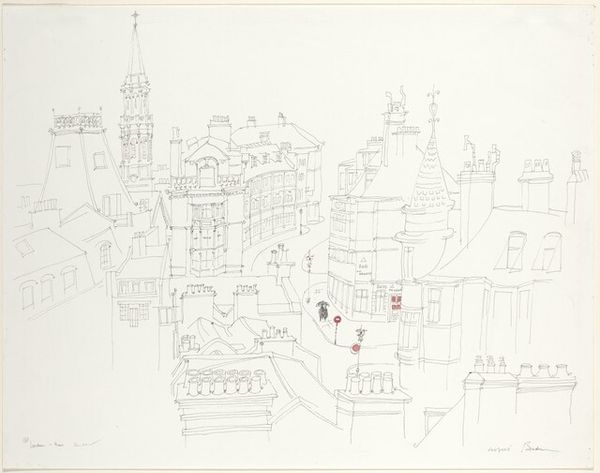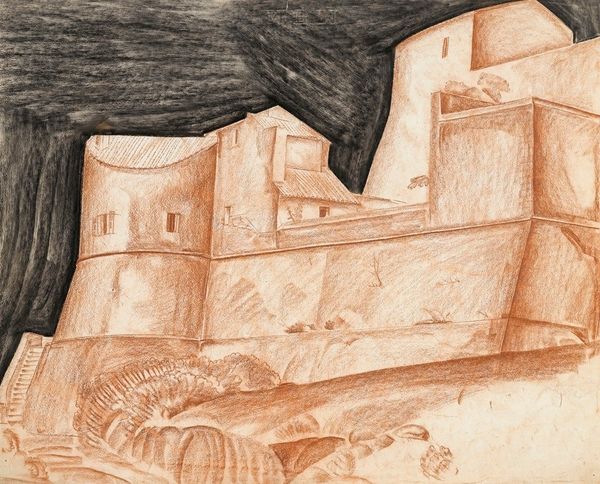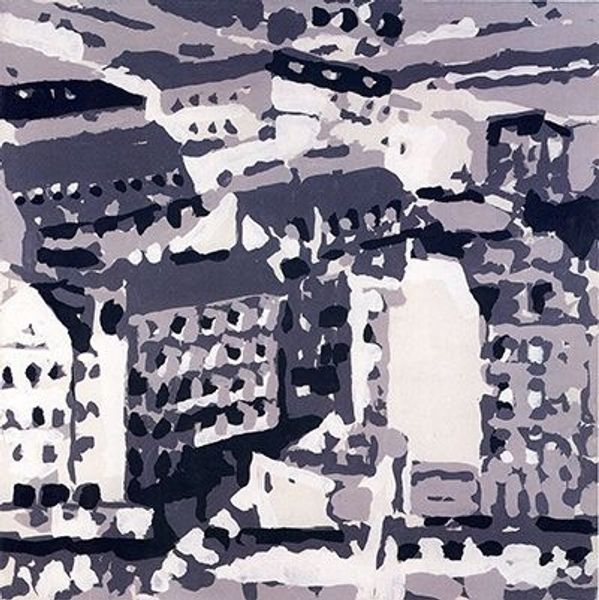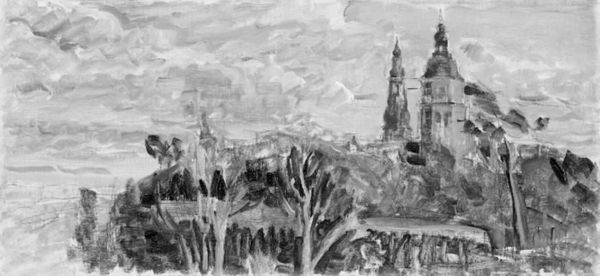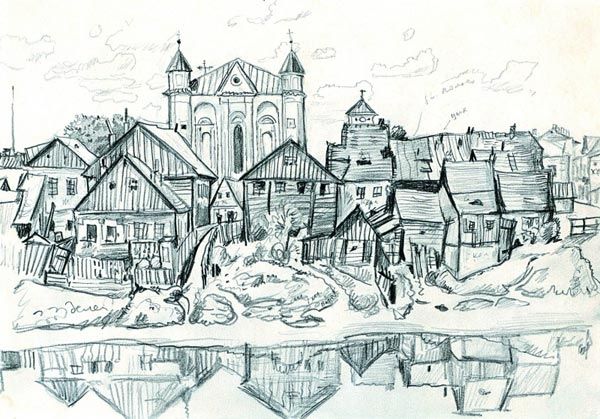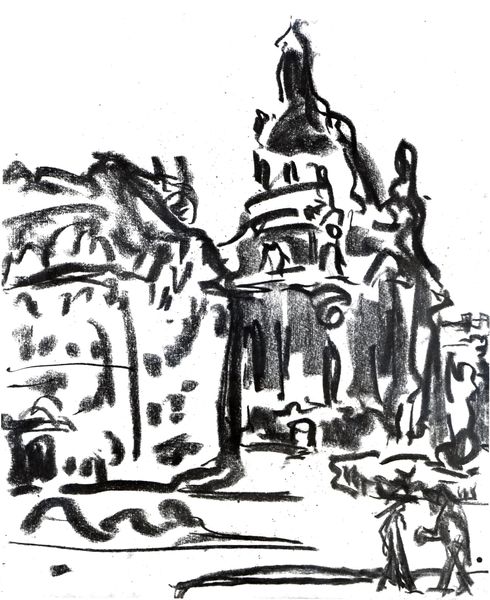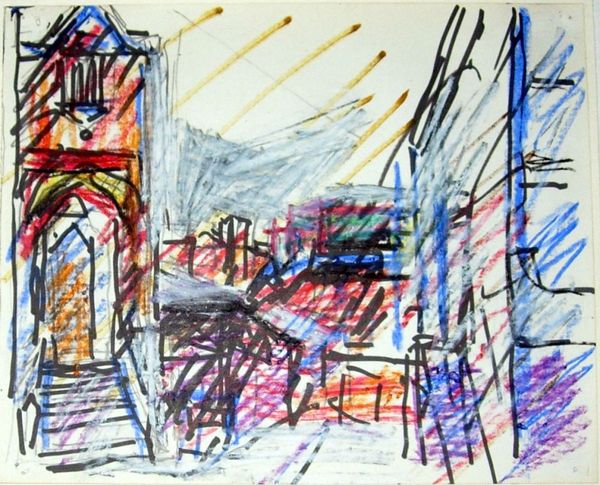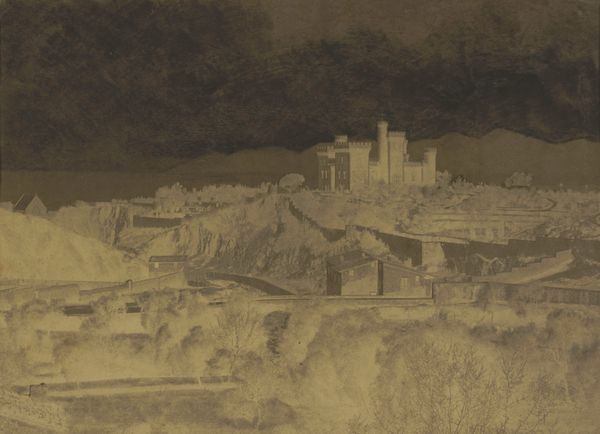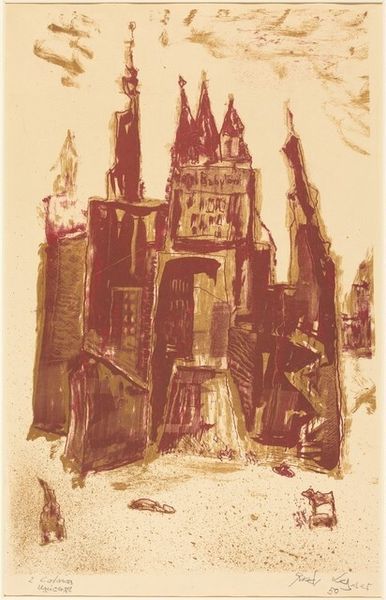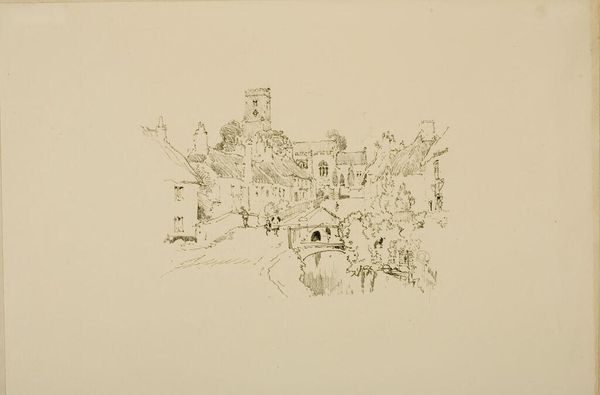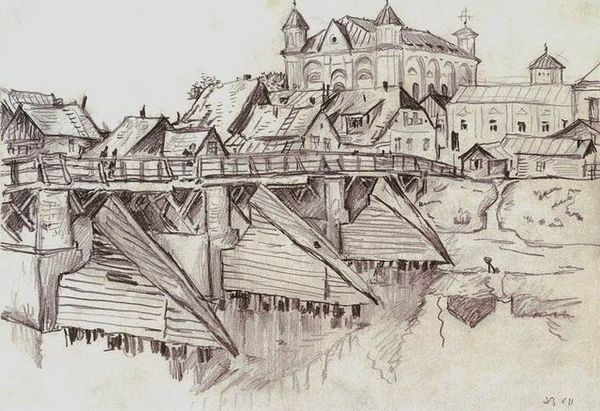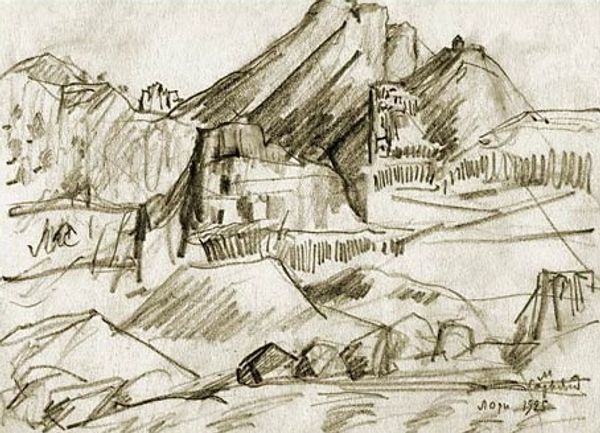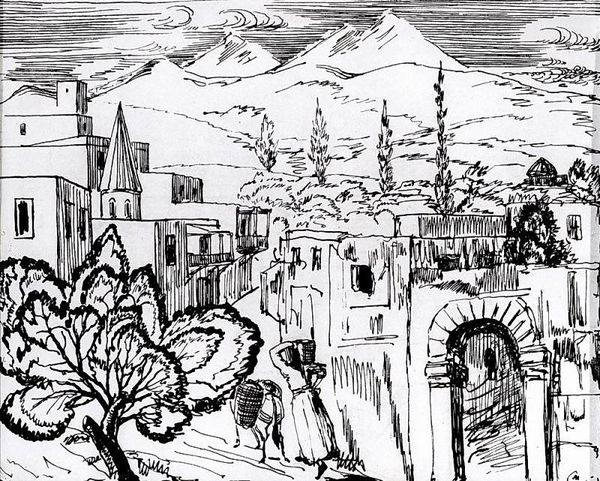
drawing, ink, pen
#
drawing
#
ink line art
#
ink
#
geometric
#
symbolism
#
pen
#
cityscape
Copyright: Public domain
Curator: Let’s spend a few moments with Nicholas Roerich’s “Vignette for book ‘N. K. Roerich,’” created in 1918, using ink and pen. What strikes you initially about this cityscape? Editor: It’s quite stark. The sharp, angular lines give the impression of a city clinging precariously to a rugged landscape, almost fortified, but also somewhat fragile, existing on a rather barren outcropping of land. Curator: The limitations inherent to the medium are clearly foregrounded here, and are intrinsic to Roerich's vision. Think of the labour, and then the cheap availability and reproduction of this type of ink drawing – how does that affect the understanding of the art piece as a valuable and distinct item versus just something repeatable? Editor: I agree completely. The choice of a stark ink drawing emphasizes accessibility – its simplicity, combined with the readily reproducible nature of prints, points towards an egalitarian ideal of knowledge distribution at a historical moment of extreme tension. I'm especially struck by its social implications during the revolutionary period of 1918 when this drawing was created in Russia. It evokes this tension with every sharp pen stroke. Curator: Exactly, the means of production speaks to the possible target audience: it suggests someone working-class with perhaps a basic education but a lot of artistic feeling and sensibility. But let's not reduce its appeal to only those consumers of culture - perhaps the drawing became itself iconic even amongst the cultural elites? Editor: I think the geometric architectural style hints at symbolism – it reminds us that idealized visions of social structures or utopian societies can often reveal inequalities when implemented. Its creation at that historical point hints, maybe, at Roerich's own uncertainties about what a truly "equal" society could even look like in practice. Curator: And also how the work can have different impacts or significance for diverse populations based on how accessible and cheap the art itself became to reproduce at this time in history. Thanks, I hadn't considered some of that until just now. Editor: That’s what makes engaging with art so compelling – uncovering the ways the artwork speaks to historical forces.
Comments
No comments
Be the first to comment and join the conversation on the ultimate creative platform.
